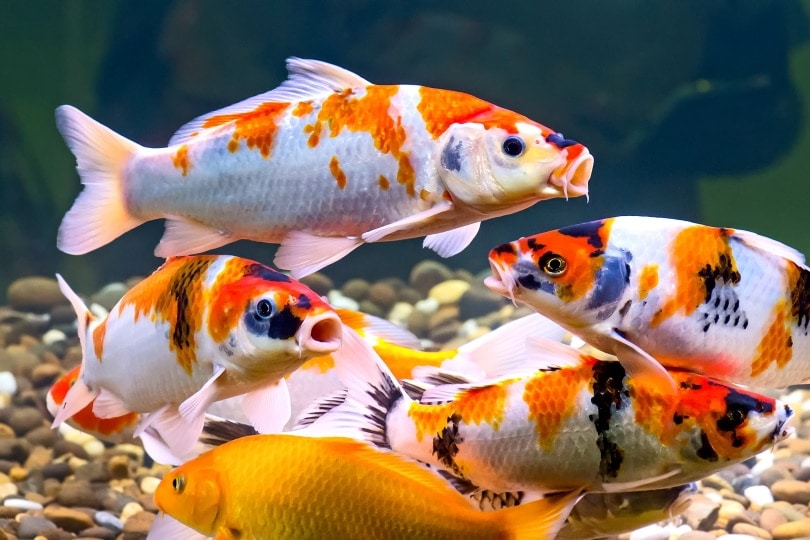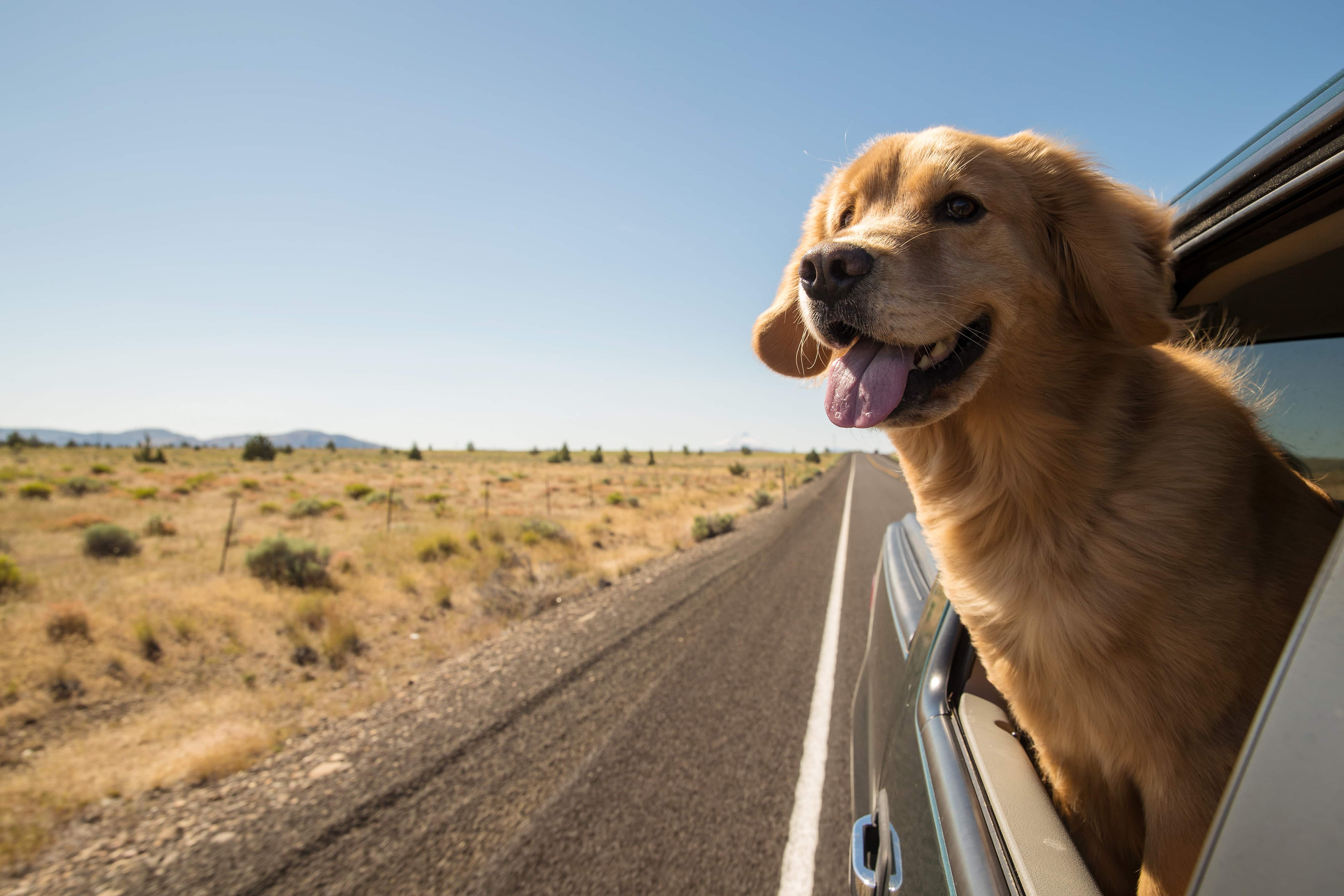Spanish Mastiff Dog Breed Info: Pictures, Personality & Facts

Updated on
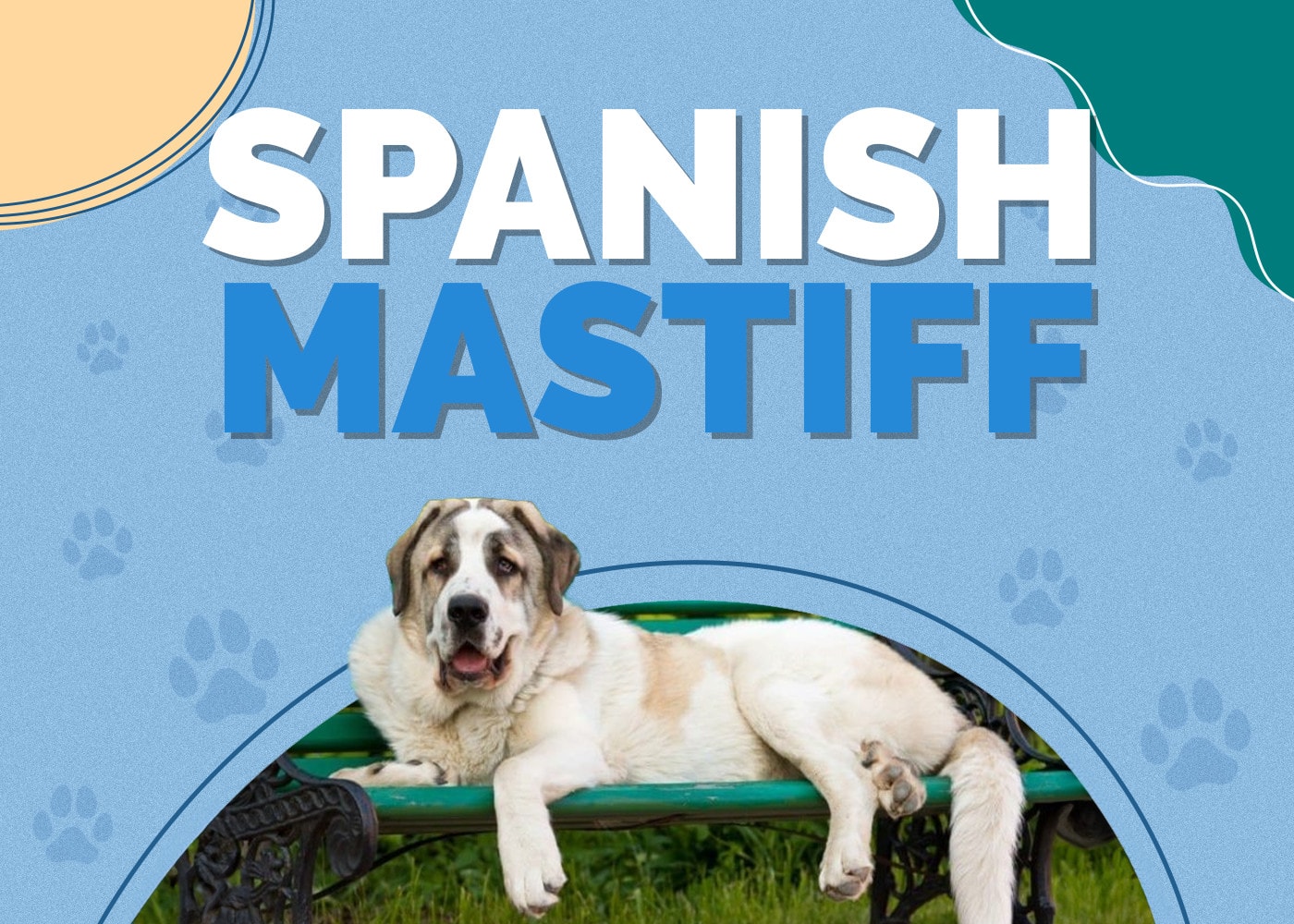
| Height: | 28-35 inches |
| Weight: | 145-200 pounds |
| Lifespan: | 10-12 years |
| Colors: | Black, red, brown, fawn, brindle |
| Suitable for: | Guarding, herding, companionship |
| Temperament: | Affectionate, kind, gentle, loyal |
The Spanish Mastiff is a giant breed of dogs. They were initially bred to be livestock guardian dogs. They are inherently protectors and take their role seriously. They are patient and exhibit gentle characteristics, being calm and patient around their family but relatively aggressive to strangers.
The Spanish Mastiff is an inherently independent dog, even though they love their family. They prefer to keep watch over the family than engage actively in playtime. These dogs are similar in appearance to a Saint Bernard. They have long, drooping jowls, so they slobber quite a bit.
Spanish Mastiff Puppies
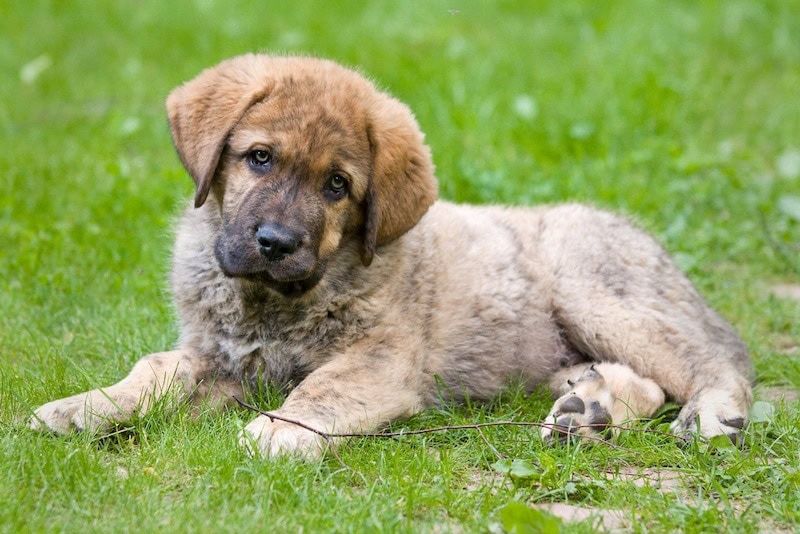
These dogs have never seen a steep rise in their popularity, and thus, their demand has not grown. It means their average price tag is not as hefty as compared to other highly popular dogs. When you are looking for quality breeders for these dogs, ensure that they have a good reputation. They should always be willing to show you the health history of the parent breeds and guide you around their facility.
Breeders for these dogs can be difficult to find outside of Spain. If you are deeply interested in one of these dogs, you might have to look into importation fees. Check to make sure that they haven’t been bred with anything else if you find them outside of the country.
3 Little-Known Facts About the Spanish Mastiff
1. The Spanish Mastiff Is an Ancient Breed
The Spanish Mastiff has been around for thousands of years. The oldest recording of this breed comes from the Iberian Peninsula. The belief is that they were brought to the area over 2,000 years ago by the Greeks and the Phoenicians.
These pony-sized dogs are one of the species with roots back to the Molosser dog, an ancient breed that dates back to around 2,000 B.C. The Molosser dog has influenced many of our giant, large, and even medium-sized dogs today.
Nowadays, the Spanish Mastiff is a native of the Estremadura region in Spain.
2. Spanish Mastiffs Were the Lead Guard Dogs in the Migration of 3.5 Million Sheep in 1526
The Spanish Mastiff has been among the most popular herd dogs in Spain for thousands of years. They were big enough to become famous for their ability to fight and win against wolves and other large predators. Since the 1400s, these dogs have been valiant and capable, taking their jobs seriously.
They used to have primarily white coats, whereas today, they are often darker colors, like brown and black. The white coat made them easy for humans to distinguish them from predators, while to the predators themselves, they appeared just like another sheep. It often worked as an illusion to catch them off guard.
La Mesta is the Spanish Shepherd’s Association and has detailed records for the breed dating back to the beginning of the 1400s. From these archives, we know that in 1526, there was a migration of 3.5 million Merino sheep throughout Spain. The Spanish Mastiff was the dog that accompanied these herds. Each Mastiff was capable enough to protect 100 sheep each.
These dogs weren’t only used as herding dogs. They could also be trained to fight, even with their docile temperaments. Historians believe that these dogs were instrumental when the Spaniards came against the native people in war. Beyond their intimidating appearance, the dogs respond well to any command with the right training.
3. There Was No Official Breed Standard for the Spanish Mastiff Until 1946
Spanish Mastiffs have grown in popularity in Spain and across much of the rest of Europe. They are useful in many working contexts and always take their jobs seriously. People also revel in the chance to have such a large, loyal companion. Some even use them as their protectors.
They have been a distinct breed for the last couple thousand years. But the dogs didn’t get an official breed standard written for them until 1946, even though they had been used in dog shows since the early 20th century. They are frequent show dogs today as well, especially in the Iberian Peninsula.
The dog has had such a big paw in Spain’s history that they have made them their national dog breed. There are around 24,000 of them within Spanish borders.
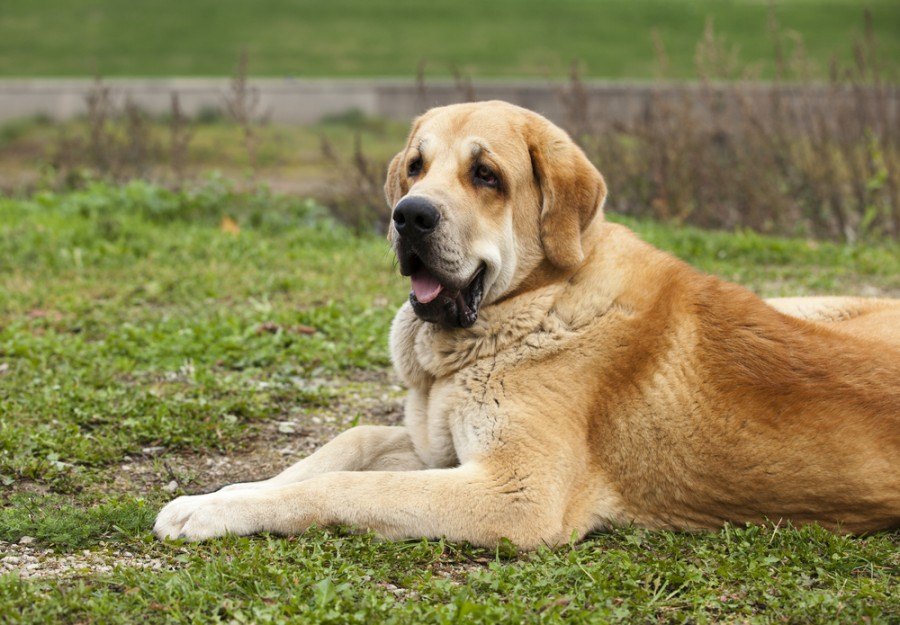
Temperament & Intelligence of the Spanish Mastiff 🧠
The best words to describe the Spanish Mastiff are aloof and docile. These dogs are livestock guardians at heart and happily behave as guardians for their family if they don’t have another job. They only need a moderate amount of exercise and prefer to watch before charging into anything.
These dogs are wary of all strangers but are not typically aggressive unless they or one of their charges are in immediate danger. They bond quickly to their family and will protect everyone who fits into this definition with their lives.
The Spanish Mastiff seems to be aloof and lackadaisical, but they are always on the alert. They need to have a clear pack leader or they will feel a responsibility to the role. They do prefer to be closer to the family, even if they don’t seem to care as much as other dogs.
Are These Dogs Good for Families? 🏡
The Spanish Mastiff does well in a family. Even though they are large, they do not enjoy playing around with smaller kids too much. Since they prefer to watch, it keeps them from accidentally inflicting any harm on smaller children.
In a family situation, they need to have a solid definition of their role impressed on them time and again. They do not need to be the leader, but if they feel like superior positions aren’t filled, they will take them.
Does This Breed Get Along With Other Pets? 🐶 😽
The Spanish Mastiff gets along well with dogs and other animals that they are raised with, but strange animals are regarded the same way as humans. They can be quite aggressive toward other pets. Taking them to a dog park is risky if they haven’t been properly socialized early in their lives.
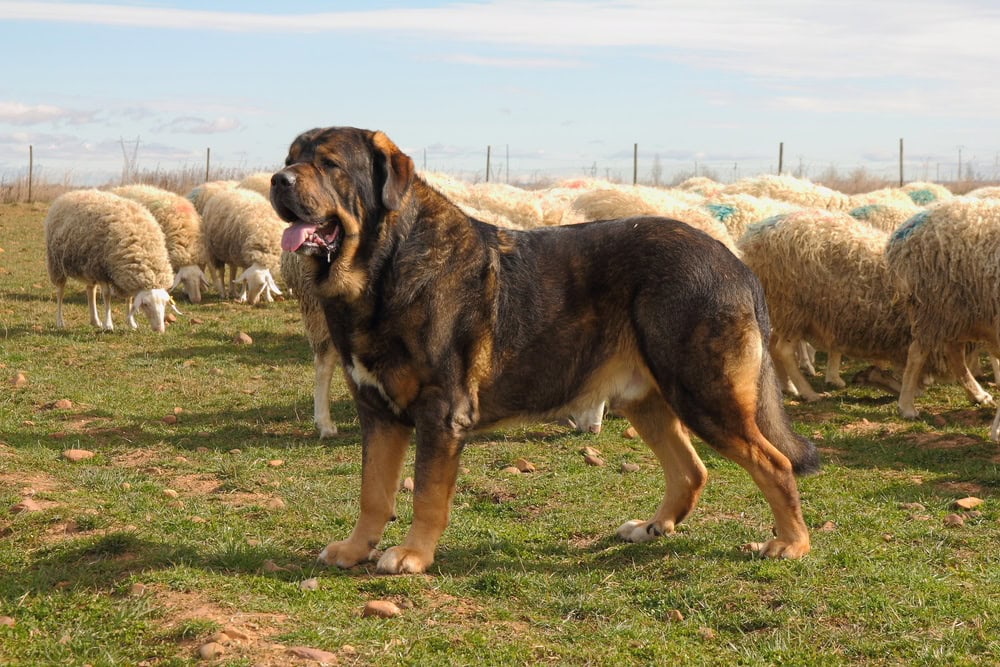
Things to Know When Owning a Spanish Mastiff
Food & Diet Requirements 🦴
These massive dogs have a massive appetite. They need around 4 cups of food a day to satisfy it. If they get more exercise as a working dog, they will need more food.
The Spanish Mastiff should receive high-quality food, whether manufactured or prepared at home. These dogs already have a great deal of weight on them, so keep an eye on their food’s fat content. They might need dietary adjustments as they go through various life stages.
Find a food formulated for large breed dogs with high protein content. Doing so helps them build muscle and retain energy without being as prone to aiding weight back on.
Exercise 🐕
These giant dogs only need a moderate amount of activity. With so much bulk, it is a large amount for them to carry around and theoretically works them harder than similar dog breeds. They are surprisingly agile, however, so don’t underestimate their physical capacity.
To meet the recommended amounts of activity for this breed, make sure they receive around 45 minutes of activity each day. If they don’t have a specific job, take them on walks or runs averaging 9 miles each week.
Training 🦮
Training these dogs can be challenging at times because they tend to be dominant. Starting at a young age is recommended for any dog, but these commonly need frequent lessons throughout the rest of their lives.
Whoever takes on the role of trainer needs to have a firm and consistent hand. They need to establish themselves as the pack leader without being aggressive toward the dog. If involving treats, don’t let them make up more than 10% of their overall diet.
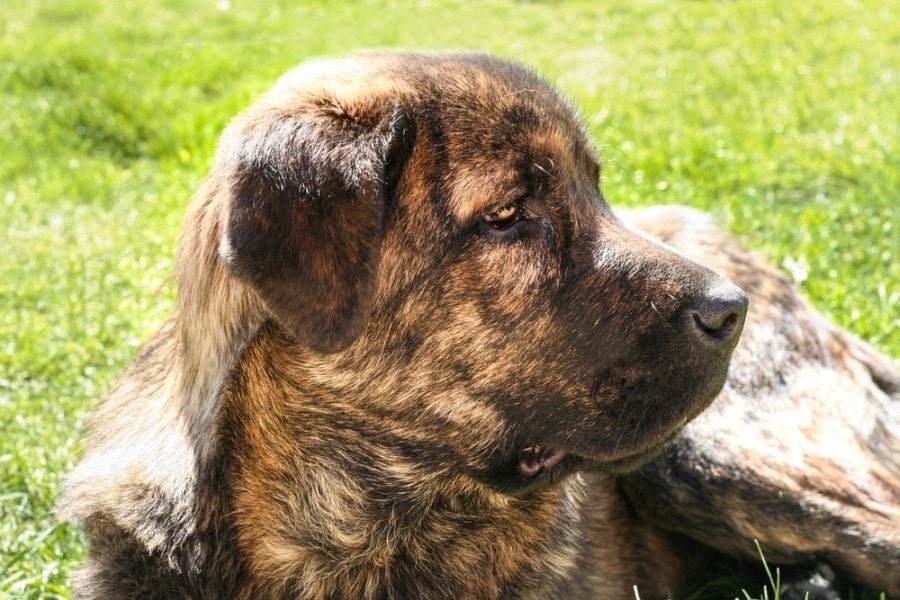
Grooming ✂️
Spanish Mastiffs have long double coats. They are not hypoallergenic dogs and shed quite a bit, no matter what time of year it is. During the fall and spring seasons, they shed even more than normal.
To reduce the amount of floating hair, use a pin brush with a metal comb and brush them multiple times a week. During the periods when they blow their coats, use a de-shedder to remove more of the undercoat.
To limit the amount of shedding around the home during these times, give them baths to loosen up the hair and quicken the process. Trim the hair that grows between the footpads to prevent dirt from getting trapped in between.
Check their ears for dirt multiple times a week because they droop and easily collect dirt and moisture. Trim their nails as needed.
Since these dogs drool so much, be prepared with towels to clean up after them since it lands wherever they go. They need a mat under their water because they drool even more after a drink.
Health and Conditions ❤️
Giant breed dogs suffer from unique conditions due to their size. Since they are also an ancient dog breed, they have a stronger system than other more modern breeds. Still, take them for their annual or biannual vet checkups so any conditions are caught as early as possible.
- Cataracts
- Elbow dysplasia
- Hip dysplasia
- Bloat
- Entropion
- Panosteitis
- Cardiac disease
Male vs. Female
Males grow substantially larger than females in this breed. They can stand 30 to 35 inches tall from their shoulder. Females stand between 28 to 35 inches but weigh much less, averaging around 110 to 170 pounds. Males often bottom out at 160 pounds and can grow up to 220 pounds.
Although there is not much of a difference between male and female personalities, males tend to be friendlier. They usually form bonds quicker and deeper with their family, while females stay reserved for much longer.

Final Thoughts
A Spanish Mastiff is a large investment. They can eat you out of house and home if you are not prepared for their voracious appetites. You also need to have made your peace with drool in whatever area the dog is allowed.
These dogs make an ultimate guard dog, always on the alert. Their intimidating appearance is enough to scare many predators away.
If you want a dog that showers you with love or happily goes along to the dog park, this may not be the pup for you. Otherwise, be ready for a large and ever-loyal companion for many years.
See Also:
- 10 Best Harnesses for Mastiffs – Reviews & Top Picks
- 10 Bullmastiff Colors & Patterns (With Pictures)
Featured Image Credit: Utekhina Anna, Shutterstock



